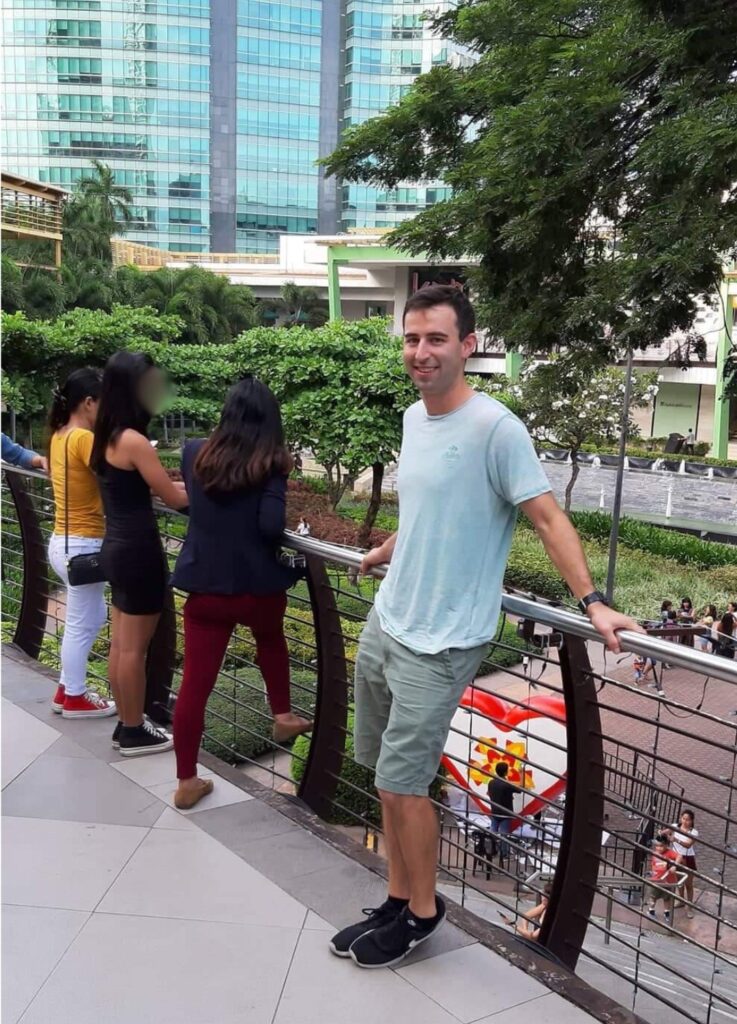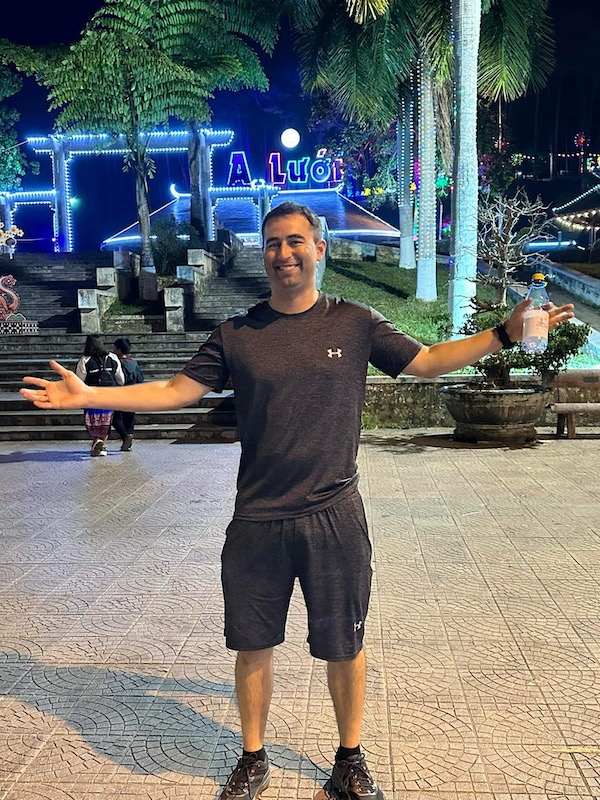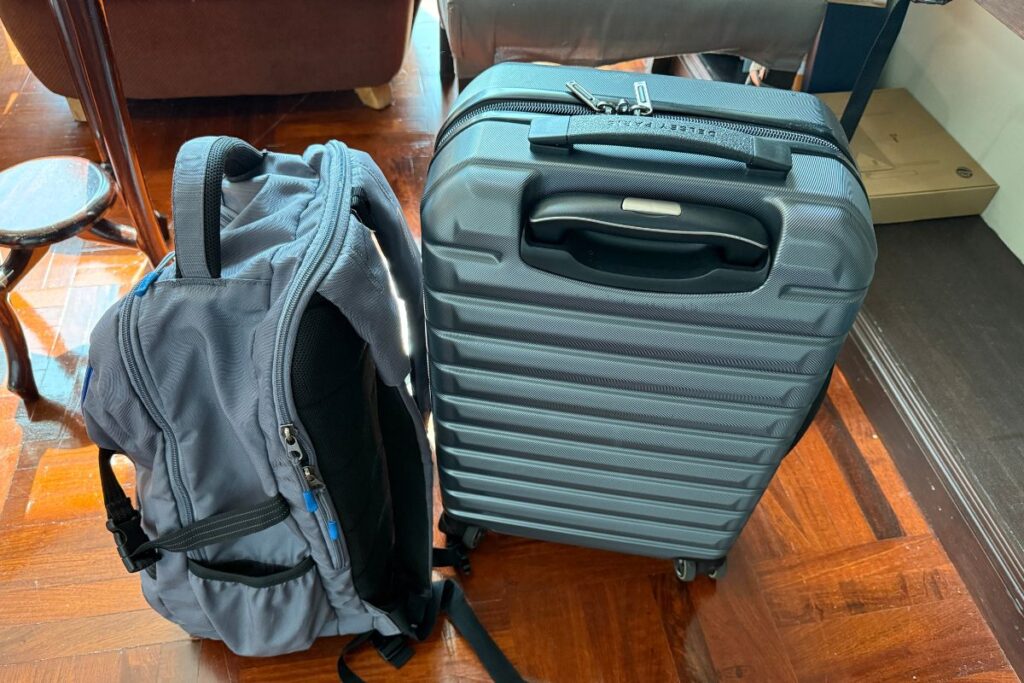Many people spend their entire lives staring at a screen in an office, wondering if there’s more to life than boring routines, heavy traffic, and predictable paychecks. I used to be one of them. After working hard to earn a four-year college degree and landing a high-paying job in information technology, I felt stuck in a career where the only way out seemed to be retirement in 40 years—or at least, that’s what I thought.
It wasn’t that I didn’t like IT; it was the monotony and boredom of being stuck in a cubicle from 9 a.m. to 5 p.m., Monday through Friday, that left me unfulfilled. I would spend countless hours dreaming about traveling the world, without knowing how to make it happen.
Finally, in 2019, I began looking for a way out by dipping my toe in the water and taking international trips to Japan and the Philippines. I didn’t fully understand what was happening at the time, but those experiences sparked an enormous thirst for more. I began relentlessly exploring ways to make it a full-time lifestyle.
If you’re serious about escaping the 9–5 and living abroad, know that it’s not a fantasy—it’s a step-by-step process. And if I could figure it out, so can you. That’s why I wrote this article. Without a roadmap, I made plenty of mistakes and had several false starts trying to break free from the 9–5 and move overseas. In this article, I’ve laid out five easy-to-follow steps, based on my experiences, that I believe will help you immensely.
Step 1: Cut Expenses and Save Aggressively
The first step I took wasn’t buying a plane ticket—it was slashing my expenses. I sold items I no longer needed, canceled unnecessary subscriptions, stopped dining out, and significantly reduced my living costs. Here are just a few things I did:
- Canceled Netflix, HBO Max, and ESPN+
- Sold my Xbox, fishing poles, unused tennis racquets, clothing, and shoes
- Moved out of my bachelor pad and in with my mom
- Moved into a house with four roommates
- Stopped eating out

At one point, I even moved back in with my mother and later shared a house with four roommates. Prior to moving in with my mom, I had my own bachelor pad where my rent was $1,250 per month, plus utilities. With my mom, I gave her $400 per month, which saved me over $1,000 per month on rent and utilities alone. In addition, she let me eat at home. Later, I moved into a house with four roommates for $600 per month (including utilities).
These changes allowed me to stack cash and build a financial buffer that supported me through the transition overseas. You may want to start off with three- or six-month trips and repeat this cycle several times. Upon returning home from a trip, I would live at my mom’s house again and restart the savings process.
To make your time living overseas more permanent, let’s move on to Step 2: Building a Remote Income Stream.
Step 2: Start Building an Online Income Stream
Simultaneously—while saving money, cutting expenses, and even while traveling—I also began developing income streams online. There are many viable paths for earning remotely, such as blogging, YouTube, affiliate marketing, coaching, freelancing, and selling digital products. However, I suggest focusing on passive online income streams that are geographically flexible.
Building online revenue streams is a strategy that aligns with the ultimate goal: to live and support yourself from anywhere in the world. Once you achieve this, you’ll be able to live anywhere, work whenever you want, and earn money even while you sleep. It’s important to choose a niche you enjoy—then it may not even feel like work!
Another option is freelancing your time. If you have skills like writing, video editing, web design, or graphic design, you can start offering your services on platforms like Fiverr or Upwork. Using my IT skills, I was earning a few hundred dollars a month building and maintaining websites for clients when I first started traveling.

Having something meaningful to work on while traveling is very important. It can be more than just remote income that funds your travels; it also gives you purpose and structure. Living on the beach full-time might sound ideal, but after just a week, I got incredibly bored without something to work on. Even if you don’t earn a full income right away, starting early is critical. You don’t need to be wealthy to travel full-time—you need to be resourceful.
Step 3: Choose the Right Countries
Choosing the right countries is crucial for sustaining a travel lifestyle on a budget. Places like Southeast Asia, Latin America, Africa, and Eastern Europe offer excellent infrastructure, vibrant cultures, great food, and a low cost of living. Cities like Da Nang, Bangkok, Cebu, and Medellin (though increasingly expensive) are all viable options where you can live comfortably on $2,000 to $3,000 per month.

This affordability is what makes long-term travel feasible for so many digital nomads. If your goal is to eventually make $3,000 per month online, living in these areas allows you to enjoy a high quality of life while building your business or freelance career. It’s also important to plan your timeline realistically. It may take a year of preparation—cutting costs, saving money, and building skills—before you’re ready, even temporarily, to make the leap. But if you delay starting the process, you’re not just pushing things off by a year—you could be postponing your freedom by two years or more.
How much you need to save depends on your plan, but I recommend estimating your overseas expenses at around $3,000 per month, with additional funds set aside for the beginning and end of your trip. Those bookends—the start and the finish—can be particularly expensive. Things like flights, hotels, airport taxis, travel insurance, and airport restaurants add up quickly, so you’ll want to account for them without dipping into your $3,000/month travel budget.
Having a solid financial cushion is essential not just for travel, but also for returning home and getting back on your feet if needed.
Step 4: Embrace Minimalism
Before I began long-term travel overseas, I had to reduce my possessions significantly to travel freely and with peace of mind. By embracing a minimalist lifestyle, I shrunk down from an apartment full of stuff to just a backpack and a carry-on suitcase. This was easier said than done. But, in order to be free, you’ll need to free yourself of excess possessions. This will help you both physically and mentally as you depart for your travels.

I sold what I could and donated the rest to Goodwill. Also, I sold my car and used the extra money to pad my savings account. This wasn’t just about saving space—it was about gaining freedom.
Letting go of physical clutter had a powerful psychological effect. I stopped associating happiness with material items and instead began to value experiences, connections, and being lightweight. Minimalism made it easier to move around, make decisions quickly, and focus on what truly matters. You begin to realize how little you actually need to be content. The more you simplify your life, the more freedom you create—not just geographically, but mentally and emotionally.
Step 5: Set a Departure Date and Follow Through!
The final step is often the hardest. Many people plan and dream for years but never actually go. What helped me was setting a fixed date and purchasing a plane ticket. That single action forced everything else into motion. One of the most important questions you can ask yourself is: What’s the worst that could happen?
For me, the worst-case scenario was that I might fail financially, run out of money, and end up back on my mother’s couch, working a regular job again. It wouldn’t be the end of the world. On the upside, I would gain new experiences, see different cultures, and possibly discover a new path I never would have considered otherwise.
I also planned for worst-case scenarios—like getting stranded or needing emergency help—and made sure I had a few friends I could count on if things went sideways. You don’t need to be reckless, but at some point, you do need to take the leap. The truth is, no one ever feels fully ready. Sometimes, you just have to jump and build your wings on the way down.
Final Thoughts
Quitting a traditional 9-5 job to travel the world might sound like a fantasy, but it’s achievable with the right mindset and preparation. By cutting expenses, saving money, building remote income, downsizing your lifestyle, and setting a hard deadline, you can create the freedom to live life on your own terms. It takes courage and discipline, but the rewards are worth it. If you’ve ever felt like there’s more to life than what’s in front of you, there is. And the path to get there starts with one bold decision.
Ready to make your move?

If you’re serious about quitting your 9-5 and want a step-by-step roadmap to do it the right way, I created a full course that walks you through everything—from making money on the road to building a life you actually enjoy. It’s called Quit The 9-5: Travel, Live, and Date Overseas, and it’s designed specifically for guys like us who want more than the daily grind.
👉 Click here to learn more and enroll: Quit The 9-5: Travel, Live, and Date Overseas

